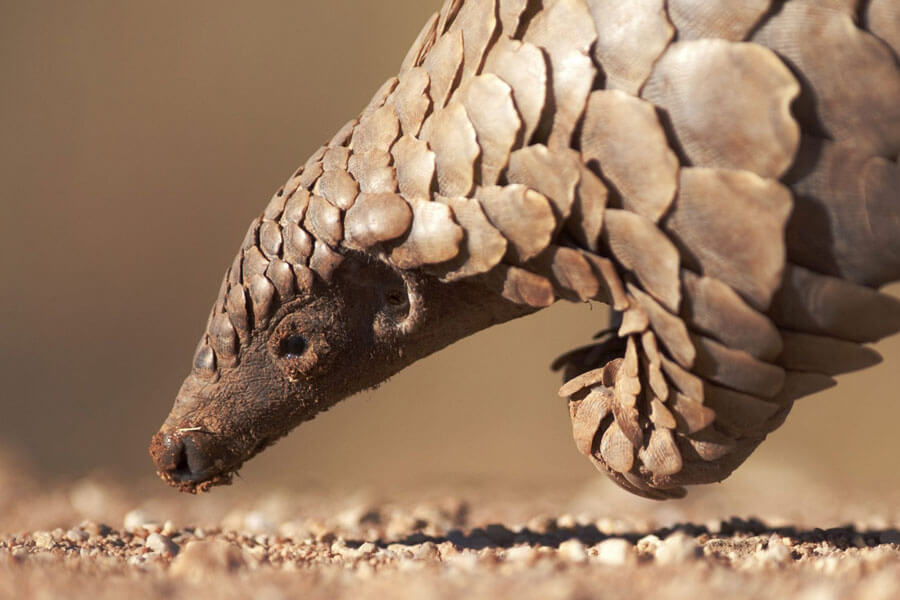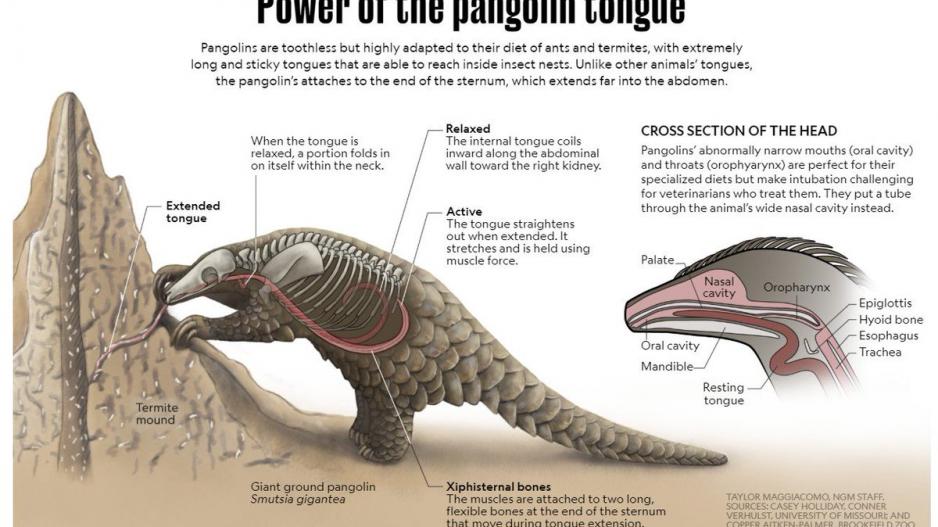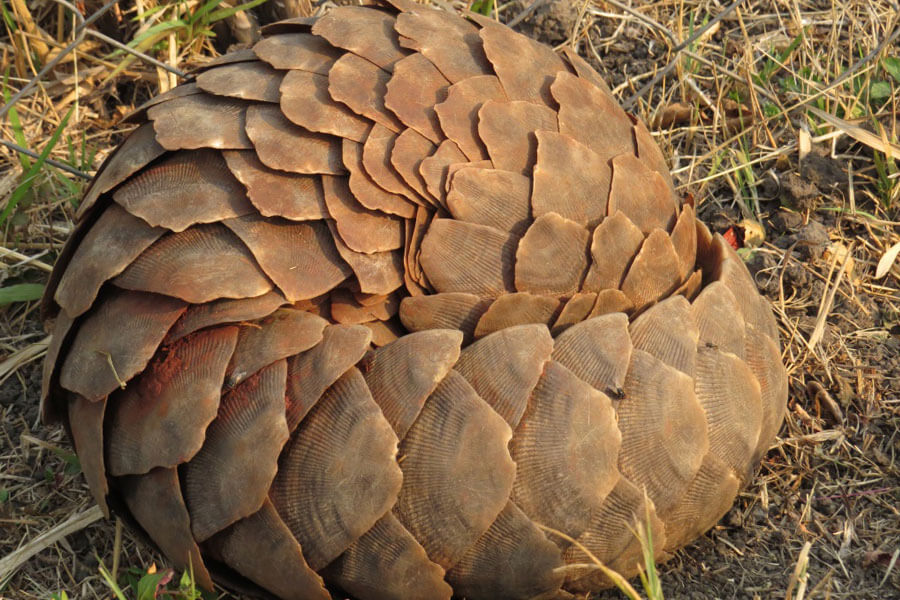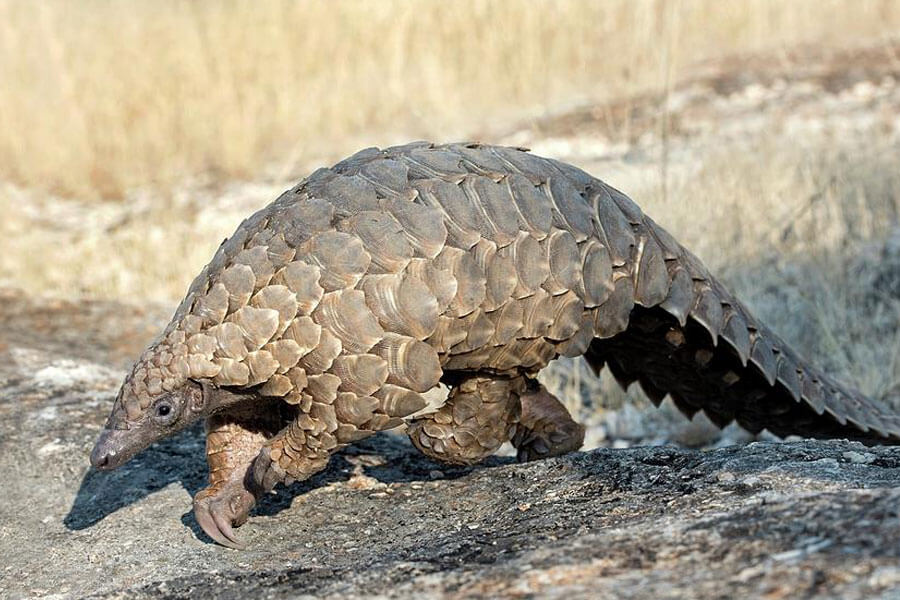Pangolins are sometimes referred to as scaly anteaters because of their external that is filled with scales from head to tail, as well as their habit of eating ants and termites.
These shy animals are now popular as the world's most trafficked animals besides human beings. The belief that their scales are useful for traditional medicine in China, Vietnam and other Asian countries has created the demand for animal products through the illegal black market.
Pangolins are interesting animals that play an important part in balancing the local ecosystem and they should be known for more than the illegal trade that risks their extinction.
Here are some interesting things about pangolins that should be more well known.

Interesting Facts About Pangolins
1. What Does "Pangolin" Mean?
The name pangolin originates from the Malay word pengguling which translates to "something that rolls up". This name is based on the pangolin's ability to roll up into a ball in the face of danger thus protecting themselves with their tough overlapping scales.
Other variations of the name from other Asian languages also retain the same meaning.
2. Pangolin Species
There are 8 species of Pangolin 3 of which are found in Asia and the other 4 are found in Subsaharan Africa.
The Pangolins in Africa are grouped as African tree pangolins (Phataginus) and African ground Pagolins (Smutsia) with each group having 2 species.
| # | ENGLISH NAME(S) | SCIENTIFIC NAME |
|---|---|---|
| 1 | Temminck's Pangolin / Ground Pangolin | Smutsia temminckii |
| 2 | Giant Ground Pangolin | Smutsia gigantea |
| 3 | White-bellied Pangolin / Tree Pangolin | Phataginus tricuspid |
| 4 | Black-bellied Pangolin / Long-tailed Pangolin | Phataginus tricuspid |
3. How Big Are Pangolins?
Pangolins are small animals that can measure between 1 and 3 feet in length and up to 30 kilograms in weight.
There are 8 Species and the sizes differ according to the species and the sex. Female Pangolins are about 30 to 40 per cent smaller than male pangolins.
The table shows the length and weight of the various species.
| # | PANGOLIN SPECIES | LENGTH | WEIGHT | HABITAT |
|---|---|---|---|---|
| 1 | Long-tailed Pangolin | 36 - 44 inches | 2 - 2.5 kg | Africa |
| 2 | Tree Pangolin | 32 - 41 inches | 5 - 8 kg | Africa |
| 3 | Giant Pangolin | 59 - 82 inches | 30-40 kg | Africa |
| 4 | Temminck's Pangolin | 21 - 65 inches | 5 - 27 kg | Africa |
| 5 | Chinese Pangolin | 16 - 23 inches | 2 - 7 kg | Asia |
| 6 | Indian Pangolin | 33 - 48 inches | 10 -16 kg | Asia |
| 7 | Philippine Pangolin | 22 - 70 inches | 1 - 34 kg | Asia |
| 8 | Sunda Pangolin | 29 - 47 inches | up to 10 kg | Asia |
4. Where Are Pangolins Found?
Pangolins live in diverse habitats ranging from savannah to tropical moist forests as well as semi-arid areas.
The African pangolins are found in Western, Central, Eastern and Southern Africa. Here are some of the countries where pangolins are present in the natural wilderness.
| Angola | Benin | Burundi | Cameroon |
| D.R.Congo | Gabon | Ghana | Kenya |
| Nigeria | Rwanda | South Sudan | Uganda |
| Tanzania | Zambia | Zimbabwe | Namibia |
| Senegal | Ivory Coast | Botswana | South Africa |
5. Are Pangolins Mammals?
Pangolins are mammals and their offspring form and develop in their bodies. This means that pangolins do not lay eggs or fertilize externally. They reproduce the same way humans, gorillas, zebras, elephants or lions do.
Because of the scales and physical look, it is easy to confuse a pangolin as a reptile but Pangolins are mammals. Pangolins are the only mammals that truly have scales on their bodies.
6. Animals Are Related To Pangolins
Pangolins are unique mammals which have no known relatives. Their closest relation is with carnivores like cats, dogs and bears but this relationship is extremely distant.
They have evolved many distinct features and characteristics that clearly set them apart from carnivores or any other mammals.
Pangolins share some characteristics with anteaters and armadillos but these similarities are a result of convergent evolution where different species develop similar traits and habits to adapt to similar environments.
7. What Pangolins Eat
Pangolins are insectivores and primarily eat insects. Their diet consists mainly of ants and termites plus other insect species especially larvae.
Pangolins are very particular and tend to eat one or two insect species even in places where there are many available species. Pangolins consume between 140 and 200 grams of insects on a daily basis and are very important regulators of termite populations.
8. How Pangolins Find Food

Pagolins mainly rely on their senses of smell and hearing to find ants and termites. Their strong front legs and claws help them tear into termite mounds and anthills, or even move tree parts to expose insects.
Their very long tongues can reach into insect tunnels to catch insects that are unable to escape from the sticky saliva. Pagolins have poor vision and don't rely much on their eyes for hunting.
9. Are Pangolins Dangerous?
Pangolins are shy and harmless animals that aren't known for being aggressive in any way. They are mostly nocturnal and hide during the daytime only to feed in the night when they can avoid any trouble with bigger animals.

Pangolins are one of the animals that do not have teeth.
While their claws are strong, they only use them for destroying termite mounds and climbing. Their only defence mechanism is rolling into a ball.
While rolling into a ball is helpful against other wildlife, this does, unfortunately, make it easy for human poachers who just pick them up with ease.
10. Why Pangolins Have Scales
Pagolins have Scales for protection from predators in the wilderness. The scales are essentially body armour that makes up about 20% of the pangolin's body weight.
In the face of danger, pangolins roll into a ball of scales that is impossible for predators like lions and hyenas to kill.
11. Why Pagolins Hunted
Pangolins are hunted and killed for their meat and scales. In countries like China and Vietnam, Pangolin meat is a highly sought after delicacy while the scales are used in traditional medicine and remedies.
While Pagolins are protected by national and international laws everywhere, the underground illegal trade is massive and sadly thriving.
12. Are Pangolin Scales Medicine?
Pangolin scales are not medicine and there is no scientific evidence to back the claims made by folk medicine practitioners and quack doctors.
Pangolin scales are made up of keratin which is the same material in fingernails, hair and horns.
In the same way that Rhinoceros horns are made of keratin, Pangolin scales are made of the same keratin that makes up your hair and fingernails.
13. Are Pangolins Social?
Pangolins are not social animals and prefer to live a solitary life and only meet for mating purposes. They prefer to live and folage alone and are hardly ever seen in groups unless it is a mother with her young ones.
Adult males and females spend brief periods of time together but this is for mating reasons, after which they all go their separate ways.
Mothers usually stay with their offspring until about 2 years when the young are sexually mature and gets abandoned by the mother.
14. How Pangolins Reproduce
Pangolins often give birth to one offspring at a time after a gestation period of between 70 and 140 days. Pangolins in Asia can occasionally give birth to 2 or three offspring at the same time, but this isn't the norm.
Pangolins become sexually mature at around 2 years of age.

15. Population Of Pangolins In The Wild
There is no exact record or estimation of Pangolins left in the wild habitats. This is because Pangolins are shy and solitary nocturnal animals that are hard to track for the purposes of research.
Since they don't live in groups, monitoring pangolins is a hard task.
16. Conservation Status
According to the International Union for the Conservation of Nature (IUCN), all the 8 pangolin species are facing a danger of extinction and therefore threatened.
Conservation research about pangolins is quite new but going by the number of pangolin scales seized on black markets around Asia, the assumption is that the populations are decreasing at a rapid rate.
It is estimated that more than 100,000 pangolins are trafficked to only China and Vietnam in one year.
| # | PANGOLIN SPECIES | HABITAT RANGE | CONSERVATION STATUS | POPN TREND |
|---|---|---|---|---|
| 1 | Chinese pangolin | Asia | Critically Endangered | Decreasing |
| 2 | Sunda pangolin | Asia | Critically Endangered | Decreasing |
| 3 | Indian pangolin | Asia | Endangered | Decreasing |
| 4 | Philippine pangolin | Asia | Critically Endangered | Decreasing |
| 5 | Giant pangolin | Africa | Endangered | Decreasing |
| 6 | Temminck's pangolin | Africa | Vulnerable | Decreasing |
| 7 | Long-tailed pangolin | Africa | Vulnerable | Decreasing |
| 8 | Tree pangolin | Africa | Endangered | Decreasing |
Final Thoughts
Pangolins are shy animals and like all shy animals, very interesting. With some adaptations of mammals and others that are common with reptiles, pangolins are great animals that need to be protected for the coming generations.
The illegal trade in wildlife products is a major problem for these animals and a big contributor to their decreasing populations. They are the most trafficked non-human animal and we hope that this article can help more people learn that the scales are just made up of simple keratin we all have in hair and fingernails.
We hope you learnt something and your voice will contribute towards the protection and conservation of pangolins and other animals. And we are certain should you get a chance to see it in the wild or in the zoo, your appreciation of this shy mammal will heighten your experience.
Given that Pangolins have no animal relatives, keeping them around the future is much better than telling stories to the next generation.
